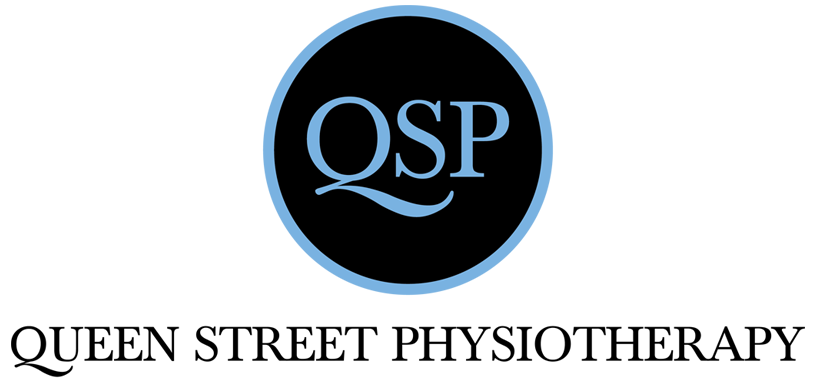Sitting at a desk looking at a computer is something that many of us spend a large chunk of our day doing. In fact, chances are that if you’re reading this right now, you’re doing exactly that. With research showing that prolonged sitting is linked to heart disease, cancers and even dementia, it’s clear that sedentary behaviour isn’t all that great for us.
Additionally, if sitting for extended periods forms part of your daily routine, it can leave your muscles tired, tight and achy from lack of use. To alleviate this here are some simple stretches you can do at your desk to get your body moving, limber up those stagnant muscles and help alleviate other nasty side effects of sitting.
Stretches for the neck and chest
Give yourself a hug. Place your right hand on your left shoulder and your left hand on your right shoulder (cross arms over the front of your body), you release tension in your shoulder blades. Breathe in deeply as you do it, to get the full effect.
If you’ve been bent over a computer screen for a while (although this is a good a time as any to remind you to watch your posture while typing), this is a great one to try. While sitting up straight or (even better) standing up, clasp your hands behind your head, flex your elbows back and squeeze your shoulder blades together. Hold for up to ten seconds and then repeat.
To loosen your arms and chest muscles, either stand in front of your desk or sit upright, interlock your fingers and extend arms above your body with palms facing upwards and elbows locked. Stretch upwards and hold for 10 seconds then repeat.
If you’ve got tension in your neck, try this one.
With your left hand resting in the middle of your back, use your right hand to gently pull your ear to your right shoulder — make sure you pull your head down, and not lift your shoulder up. Once in position attempt to look at your left shoulder, while holding your head gently, but firmly in place. You’ll will feel the stretch right through the left side of your neck. Hold for up to twenty seconds then repeat for the other side.
A chest elevation stretch is another good one to reduce stress in the upper shoulders.
Sitting in your chair, with feet firmly planted on the floor, and hands at your sides, gently raise your chest towards the ceiling, making sure you don’t lift your chin — keep it level with the floor. Hold for ten seconds, then relax and repeat.
If your shoulders are particularly tense, find a corner or door frame to do further stretch your chest. Stand facing the corner, and with hands at shoulder height, place your forearms, elbows and hands against the wall. Lean in for fifteen seconds, or until you start to feel looser. Raising and lowering the height of your hands will stretch different parts of the chest, so you can alter this slightly to target particular areas.
Stretches for hands and fingers
Constant typing can cause your hands to tighten up without even realising it. Relaxing your fingers is as simple as shaking your hands out, or holding your arms out in front of you, and moving your closed fists in a circular motion. Make sure to switch direction from time to time.
Stretches for legs and lower back
Even though you’re sitting, giving your legs a good stretch is still essential. Try sitting on the edge of your seat, stretching your right leg in front of you with the heel on the ground (leg straight), and leaning forward to try and get your belly button to your thigh. Hold for three to five seconds then move on to the other leg.
If you’re sore in the hips as well as the legs, try a cross legged stretch. Put one ankle on the opposite thigh, and lean forward to try and touch your chest to your thigh. You should feel the stretch through your hips and upper legs. Hold this one for three to five seconds and then swap legs.
To release tension in the lower back, a simple twist stretch can help. With legs crossed, gently twist to look over your shoulder and hold the position for ten seconds. Don’t go too hard or too far; as with all of the stretches this should be slow, gentle twisting.
Other tips:
When standing up and siting down, don’t use your hands. You’ll be surprised at how tricky this is, and the muscles you feel being used.
Consider swapping your chair for a fit ball, at least for part of the day. The skill required to sit on one will help you engage your core. Even consider investing in up upright standing desk to eliminate (or minimise) sitting (plus you’ll burn up to 30% more calories standing that you will sitting).
And finally, get up and walk. It’s not strictly a stretch but it is good advice; our bodies are designed to move. Not only do our muscles thank us for it, but our waist lines as well. Walking burns three to five times the calories that sitting does, which is incentive enough on its own. If you’ve got a job that requires lots of sitting, try to incorporate as much walking during the day as you can. Take the stairs, get up and make your own coffee, have ‘walking meetings’, walk to a nearby colleague’s office instead of emailing them, or even pace the office when you’re on the phone. Any movement is better than no movement.
Note: Stretches should be slow and gradual and should not be conducted to the point of pain. If you’d like some guidance or advice on appropriate stretches for you please contact the Queen Street Clinic, Brisbane.

